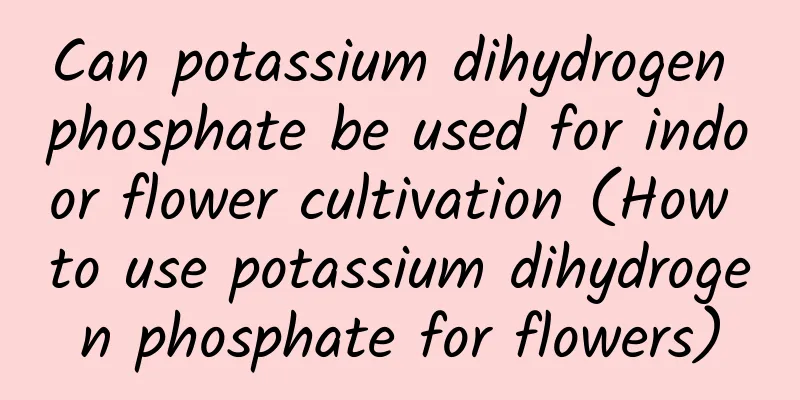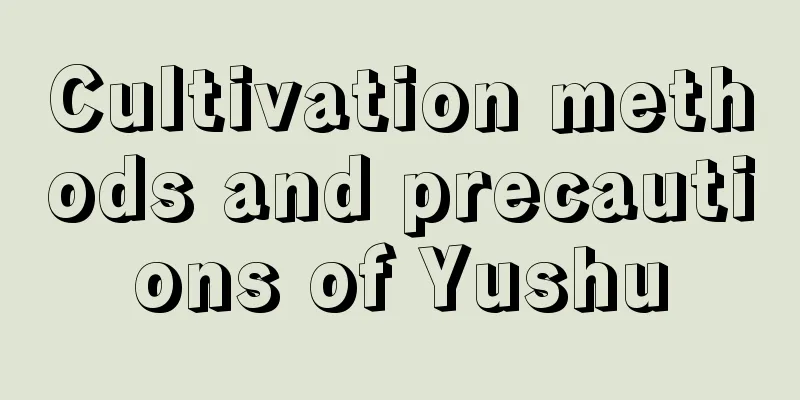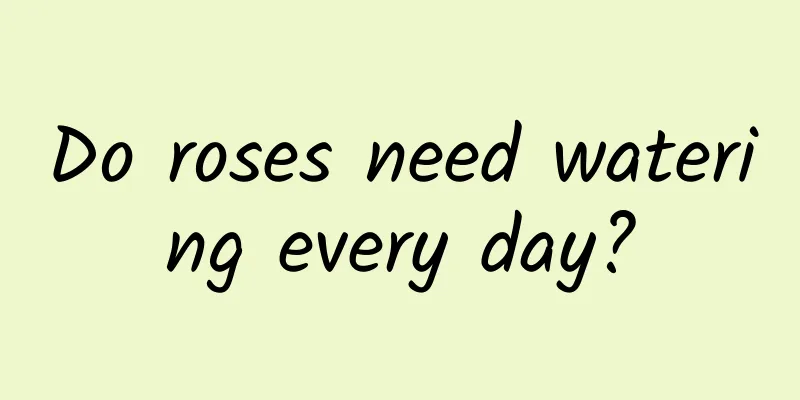Can potassium dihydrogen phosphate be used for indoor flower cultivation (How to use potassium dihydrogen phosphate for flowers)

How to use potassium dihydrogen phosphate when growing flowersPotassium dihydrogen phosphate is a drug widely used in crop planting and an important growth regulator. It can effectively promote the differentiation of crop flower buds and increase the number of flowers ; enhance the crop's drought and cold resistance ; enhance the plant's resistance to diseases and pests , etc. However, you must pay attention to the correct method of use during use, otherwise it will cause serious drug damage. How to use potassium dihydrogen phosphate to give full play to its role and value? The three elements that plants need the most for nutrients are nitrogen, phosphorus and potassium. In the growth stage, they need more nitrogen, and in the flowering stage, they need more phosphorus and potassium. Therefore, potassium dihydrogen phosphate is generally used in the bud and flowering stages of plants. There are several ways to use potassium dihydrogen phosphate: foliar spraying, root irrigation, and foliar fertilization , but the use of these methods should also depend on the type of crop. Flowers that are not affected by acidic or alkaline soil can be used. Flowers whose leaves are not hydrophilic, such as lotus and nasturtium, are best used by irrigating their roots . For flowers that prefer alkaline soil, such as cacti, wolfberry bonsai, etc., it is best to use foliar spraying. The safe period for applying potassium dihydrogen phosphate is generally 7-15 days, and the application time is generally selected before 10 am and after 3 pm on a semi-cloudy or sunny day . Usually, a crop should not be sprayed too many times in a season, and 3 times during the key growth period is enough. The concentration is a point that you must pay attention to when using potassium dihydrogen phosphate. It must not be too high. When applying fertilizer to the leaves, the concentration can be controlled at 0.2-0.3%. The concentration for root irrigation can be slightly higher, but it should not exceed 0.5%. [Summary] Correct use of potassium dihydrogen phosphate can promote the growth and flowering of flowers . |
<<: What does it mean when succulents wear skirts?
Recommend
Cutting method of millennium wood
The thousand-year-old wood , also known as the ir...
How often should I water jasmine?
Jasmine is a flower that prefers a warm and humid...
How to plant sugar-coated fruit radish? Which month is the best to plant it?
The best time to plant sugar-coated fruit radish ...
Should I use a large pot or a small pot for small hibiscus?
Should I use a large pot or a small pot for small...
Do I need to repot the newly bought Kalanchoe and can I water it?
1. Do you need to change the pot? Don't rush ...
How to care for the succulent Daruma Funi
Growing conditions of succulent damson The Daruma...
The efficacy and function of Tongquancao
1. About the appearance of Tongquan grass: The gr...
The difference between red horse hoof grass and money grass
1. Difference of blades The leaves of red horse h...
How much water should be poured on bougainvillea after repotting?
1. How much water to pour Its root system is rela...
How to propagate air plants
1. Seed propagation 1. Artificial pollination: If...
Winter management of peony
When caring for peonies in winter, you should con...
Varieties of Prunus armeniaca
Prunus mume It blooms pink or pink-white flowers ...
What plants are good to put at the entrance?
1. Monstera The leaves of Monstera are very pecul...
What kind of flower pot is good for banyan tree
What kind of flower pot is suitable for banyan tr...
How to prune cassia?
Gardenia is loved for its pure white flowers and ...









